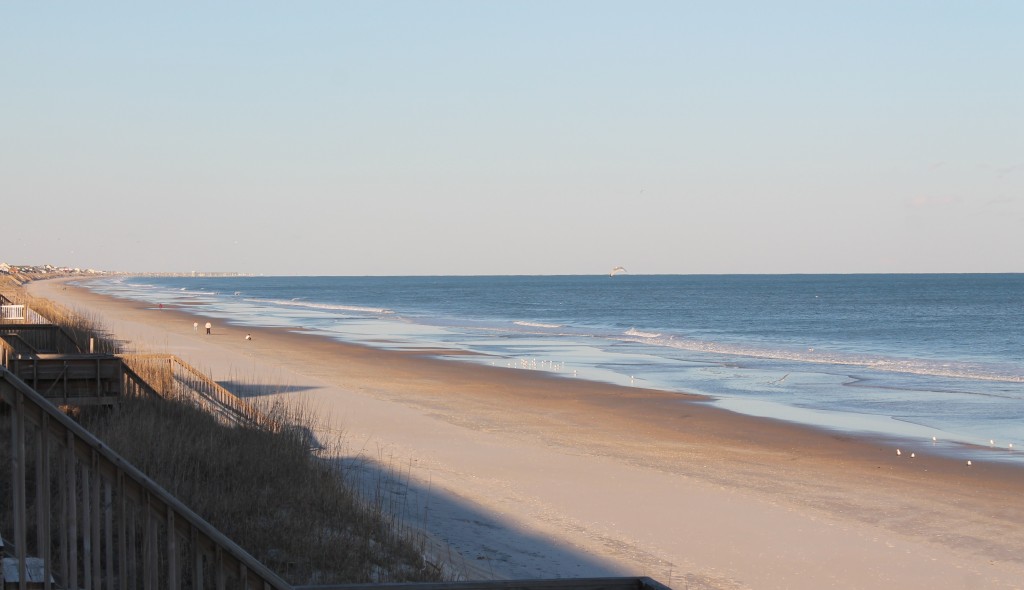 Earlier, at the request of some readers with island and/or beach living aspirations, I promised to share a series of small things I’ve learned about relocating to an island. First, however, let me give you a little background on my neck of the woods and on my experience moving here. For those of you unfamiliar with the Carolinas, most of the coastline in both states (and yes, my island experiences have spanned both states) is bordered by a series of islands. The islands are separated from the mainland by the Intracoastal Waterway and are usually (but not always) accessible by bridge, so traveling between islands is relatively easy. We came down here nine years ago planning to live on what I’ll call Island #1, but after our rental arrangement fell through two days before our move, we found a rental home on Island #2. We stayed on Island #2 for a few months before purchasing a home on Island #3. Then, about a year-and-a-half ago, we moved to Island #4. (See my About page for more details.)
Earlier, at the request of some readers with island and/or beach living aspirations, I promised to share a series of small things I’ve learned about relocating to an island. First, however, let me give you a little background on my neck of the woods and on my experience moving here. For those of you unfamiliar with the Carolinas, most of the coastline in both states (and yes, my island experiences have spanned both states) is bordered by a series of islands. The islands are separated from the mainland by the Intracoastal Waterway and are usually (but not always) accessible by bridge, so traveling between islands is relatively easy. We came down here nine years ago planning to live on what I’ll call Island #1, but after our rental arrangement fell through two days before our move, we found a rental home on Island #2. We stayed on Island #2 for a few months before purchasing a home on Island #3. Then, about a year-and-a-half ago, we moved to Island #4. (See my About page for more details.)
That being said, my first relocation suggestion is to try to rent a beach vacation home during the low season (also called “off seasonâ€) for a few months first, even if your long-term goal is to purchase a home. Around here, the islands all have high and low tourist seasons, with summer typically being the high season. Now, given the real estate boost of late, you may not want to wait long before you buy. And clearly, this will not be the best advice for everyone, as each situation is unique, but there are two advantages to doing it this way.
The first advantage of renting a vacation place during the low season is price. You’ll get the biggest bang for your housing buck if you rent, in the low season, a property that’s rented out on a weekly basis during high season. Here’s why. Properties rented out weekly during high season typically make quite a bit more money on their weekly, high-season rental rates than long-term rental properties make on long-term rates, so they can often afford to offer greatly reduced monthly rates in the low season. The house we rented on Island #2, for instance, rented out at high-season weekly rates over the summer, but charged a monthly rate (in our case lasting from October through April) that was about half of what they charged for one week in the high season. They had already made the bulk of their money off their high-season renters, so they could afford to offer a low, off-season rate provided we could vacate the property by summertime. Properties that rented only to long-term renters simply could not compete with that rate. Note: These vacation homes almost always rent furnished, so you will need to consider that in your planning.
Second, after experience with four islands, I can attest to the fact that each island here is quite different, despite some surface similarities. After visiting Island #1 multiple times, we moved thinking we had already found the ideal island for us. Only because of our rental fiasco did we begin to consider surrounding islands as possibilities. After a few months on Island #2 and numerous day trips all up and down the Carolina coast, we found, in Island #3, an island far better fitted for our family for many reasons. For example, Island #1 proved to be a little more populous than what we decided we wanted, and Island #2 proved to be a little too small to offer certain conveniences we decided we didn’t want to live without. (I guess we were kind of like Goldilocks and the ThreeIslands, now that I think about it.) We were coming from the third largest city in the United States, so at the time, the practical differences between several islands that all appeared sparsely populated by our standards were fairly nebulous to us. Live-and-on-location research changed that.
Not everyone can manage this, but in our case, we were able to save money and find our own paradise by doing it this way.